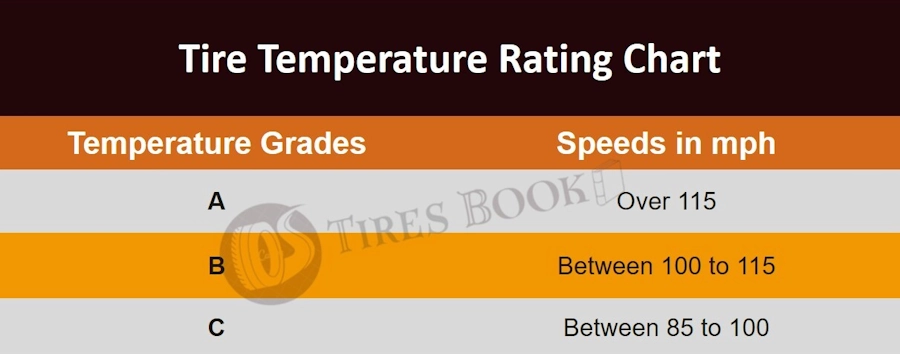What Is Meant By Tire Temperature Rating?
A tire’s temperature rating reflects its ability to handle and dissipate heat. It’s a measure of the tire’s resistance to heat and its capacity to avoid damage or failure due to high temperatures. These ratings are crucial, especially for driving at high speeds or in hot climates.
Tire Temperature Rating Explained
The tire temperature rating is part of the Uniform Tire Quality Grading System (UTQG), along with treadwear rating and traction rating. The Department of Transportation (DOT) developed temperature ratings for tires. Manufacturers test the tires under specific temperature conditions and then assign temperature ratings to them. These ratings are categorized as A, B, and C.
- C: The most common type, handling temperatures up to 212°F (100 oC).
- B: Designed for hot weather, usually found on high-performance tires, withstanding up to 230°F (110 oC).
- A: For very hot weather, found on ultra-high performance and extreme performance tires, enduring up to 249°F (120.5 oC).
The A-rated tire can effectively dissipate heat at speeds greater than 115 mph, while B-rated tires work well between 100 and 115 mph. C-rated tires are effective between 85 and 100 mph. It’s important to note that while the temperature rating is significant, other factors like traction grades and treadwear ratings also play a vital role in determining a tire’s overall quality.
Tire Temperature Rating Chart

Locating the Tire Temperature Rating
Where can you find a tire’s temperature rating? It is usually located on the tire’s sidewall. Along with other information like traction rating and treadwear rating, the temperature rating is part of the tire’s UTQG.
For example, when you see the UTQG code “600 AA B”, it means the tire has a treadwear rating of 600, a traction rating rating of AA, and a temperature rating of B.
Importance of Tire Temperature Ratings for Drivers
Why do temperature ratings matter? They are essential for safety. A tire that cannot dissipate heat quickly enough can break down, potentially leading to a blowout. This risk is amplified in hot weather conditions, where the pavement temperature is higher. Understanding these ratings helps drivers choose tires that can handle their specific driving conditions, thereby reducing the risk of tire-related accidents.
Relation Between Temperature Rating and Heat Resistance
The temperature rating directly correlates with a tire’s heat resistance. A-rated tires, being able to withstand the highest temperatures, offer the best resistance to heat build-up. B-rated tires are adequate for most conditions, whereas C-rated tires are recommended for cooler environments. Selecting the appropriate tire based on these ratings ensures optimal performance and safety in various temperatures and driving speeds.
What Is a Good Tire Temperature Rating?
For family sedans and SUVs, a good tire temperature rating is typically B or C. Tires with an A rating are only suitable for high-performance or sports vehicles that exceed 115 mph, making them ideal for performance in hotter climates and under intense driving conditions.
